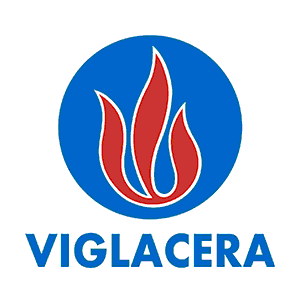Investment in transport infrastructure in the south falls short of the requirement, hindering the region’s growth, a seminar heard in HCM City last week.
“HCM City and neighbouring provinces like Binh Duong, Dong Nai, Ba Ria – Vung Tau, Long An account for over 42 per cent of GDP, 40 per cent of exports and 60 per cent of Government revenues, but investment in their transport infrastructure has not been commensurate or given attention in recent years,” Nguyen Thanh Loi, deputy editor-in-chief of Sai Gon Giai Phong (Liberated Sai Gon) newspaper, the seminar organiser, said.

A view of HCM City. Shortage of funds and difficulties in acquiring land are the main reasons for the poor development of infrastructure in the South. — Photo Ashui.com
The southern region has only two expressways: HCM City – Long Thanh – Dau Giay measuring 43km and HCM City – Trung Luong measuring 42km.
The total length of expressways in the country measures 746km.
“The two expressways face the threat of being overloaded due to the huge number of vehicles,” Loi added.
There are few large bridges in the region either. Except ones like Can Tho, My Thuan and Rach Mieu, most bridges on National Highway No 1A are small and bottlenecked.
“The national master plan for southern transportation has been approved by the Government but executing it remains a problem,” Nguyen Van Tam, deputy director of the HCM City Department of Transport, said.
HCM City still lacks key ring roads, he said, pointing out that belt road Nos 2 and 3 are under construction and No 4 is still on paper.
"These roads should have been built long ago to avoid having vehicles pass through the city.”
Shortage of funds and difficulties in acquiring land are the main reasons for the situation, he said.
Vo Kim Cuong of the HCM City Master Plan Association said: “Master planning is very important but how to implement such master plans is much more important.”
He said that without proper implementation no master plan would be very effective.
“If the Government wants HCM City and the southern region to develop rapidly, it needs to make huge investments.”
Ha Ngoc Truong, deputy chairman of the HCM City Road and Bridge Association, recalled that in 2005 the Government had approved a transport development master plan for the Mekong Delta for up to 2020.
“We have only three years left but barely half the work has been done.
“Waterway transportation in the Mekong Delta is degrading and roads have to carry 90 per cent of cargo and passengers. It is unreasonable.”
Waterway transport from HCM City to the Mekong Delta is only through the Cho Gao channel, which, while being large enough for big vessels, is overloaded.
According to an estimate from the HCM City Cargo Transport Association, roads in the Mekong Delta only meet 30 per cent of transporters’ demand and this affect the competitiveness of the region’s agricultural and aquacultural produce.
(VNS)
- History through Hà Nội’s architecture
- Vietnam needs more green urban development
- First edition of EuroCham Greenbook launched
- BEX and MCE Asia 2017 welcomes the region’s green building and construction community to a global showcase of latest innovations
- Build Eco Xpo (BEX) Ramps Up 10th Anniversary Edition to Catalyse Change in Asia’s Sustainable Buildings Landscape
- Vietnam Japan Architecture Forum 2017
- Vietnamese architect receives SIA-Getz awards
- WACKER Opens Second Sales Office in Vietnam and Cooperates with COSIC to Establish a Showroom for Construction Chemicals
- Cần Thơ wins Asian Townscape Award 2016
- Typical Hà Nội social houses come to life




























